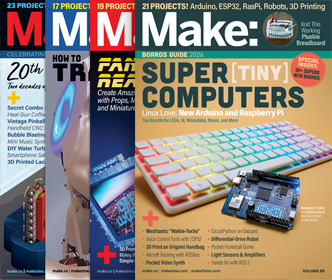Who is a maker?
“What is a Maker?” is often the first question I’m asked in an interview. I often try to avoid answering the question. In fact, I frequently ask people how they would define “maker.” I encourage them to define it in a way that includes themselves and what they do.
I tend to think it’s a good think that we might each have our variation of what maker means. I’d argue that one of the reasons that “maker” became popular is that it serves as a kind of umbrella or “uber” category that can include numerous subcategories. In other words, by not being well defined, maker can be inclusive of many different people and what they do.
I first used the word “maker” in the introduction to the first issue of Make Magazine in 2005. It seemed perfect name to call the people who read Make Magazine. However, I didn’t have a very specific idea of what maker was. I thought of a maker as an enthusiast who built projects as a way to play with technology and create something to share with others.
A person might identify with the activity that they do.
- A cook / cooking
- A welder / welding
- A weaver / weaving
- A baker / baking
- A builder / building
- A programmer / programming
Each one of the labels and each activity might be considered a form of making. While you are a cook or programmer, you might also consider yourself a maker.
If you’d like a more formal definition of Maker, I recommend one offered by Liz Corbin of the UK’s Institute of Making. She presented it at Maker Faire Xi’an in China. It’s one of the best complete definitions of making that I’ve seen.
“People craft, design, manufacture, tinker, engineer, fabricate, and repair — both young and old — across the civic, public and private sector — for hobbyist pursuit, as a profession, for study and research — with digital and analog tools — sharing unique historical perspectives, lived experience, and visions of the future.”
Liz Corbin



